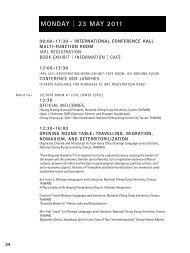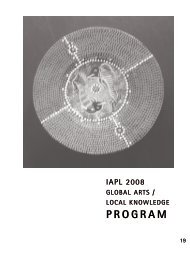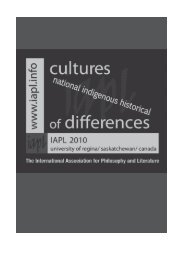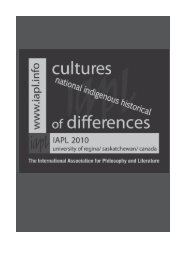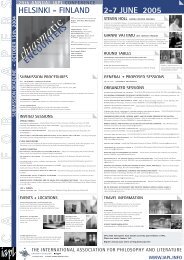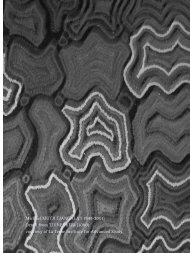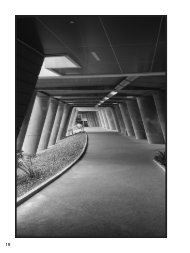IAPL2012-CB-0531-052.. - The International Association for ...
IAPL2012-CB-0531-052.. - The International Association for ...
IAPL2012-CB-0531-052.. - The International Association for ...
Create successful ePaper yourself
Turn your PDF publications into a flip-book with our unique Google optimized e-Paper software.
PLENARIES<br />
However, Tüür does not base these musical narratives on the unfolding of motifs or<br />
tight-knit themes, as typically happens in classical works, but grounds them rather<br />
in the dialectical development of sound—the main carrier, as Tüür sees it, of musical<br />
energy in his work.<br />
Tüür’s attitude towards sound or timbre can be described as “structural.” This is to<br />
say that, by manifesting itself in distinctive and characteristic timbral objects, sound<br />
takes possession of the thematic material and actually replaces the traditional motif. In<br />
addition, through becoming the main “carrier” of the “energy” of music, timbre similarly<br />
takes over the function classically assigned to harmony. As such, timbre becomes <strong>for</strong><br />
Tüür an entity capable of generating extended musical <strong>for</strong>ms. This is quite different<br />
from how timbre (sound) is usually used in popular music, where it often functions as<br />
an aid to understanding the music. It is also quite different from the view, in traditional<br />
music theory, of timbre as a primarily emotional (i.e. non-structural) aspect of music.<br />
Indeed, traditionally, timbre is held to play a relatively trivial role in imparting musical<br />
structure, at least compared to the roles played by harmony, counterpoint, and <strong>for</strong>m.<br />
This different understanding of sound allows Tüür to use modern timbral language<br />
and, at the same time, detach himself from the structural fragmentation inherent in<br />
many works of new music. In becoming the monumental phenomenon in Tüür’s music,<br />
sound develops through different stages: inception, crystallization, “liquefying”, fading,<br />
etc. <strong>The</strong> development of timbre thus gives the impression of an energy, embodied in<br />
material sound, manifesting itself through different <strong>for</strong>ms, like a growing organism.<br />
<strong>The</strong> impression of gradual growth is emphasized by the avoidance of well articulated<br />
caesuras between the smaller <strong>for</strong>mal sections and by the continuous development<br />
of the music: in addition to presenting a new idea, each successive section further<br />
elaborates on the material presented in the previous sections. This links Tüür’s music<br />
with the concept of organic <strong>for</strong>m propagated by the artists of the Romantic movement.<br />
One recalls the declaration of the Finnish composer, Jean Sibelius: “I intend to let the<br />
musical thoughts and their development determine their own <strong>for</strong>m in my soul.” Tüür<br />
seems to regard the organic development of his own compositions in a similar light.<br />
Evidently dissatisfied by the eclecticism that persisted in his meta-style of the 1990s,<br />
Tüür developed a new approach to composition around 2003, an original approach<br />
described as “vectorial.” <strong>The</strong> pieces so composed are based on a relatively short numeric<br />
combination or code. During the composition process, the code is subsequently<br />
“translated.” Where serial composing technique would translate the code into some<br />
so-called static element of music (note, rhythmic duration, dynamic level, etc.), Tüür’s<br />
work translates the code into the potential moving direction of voice or musical line:<br />
hence the term “vectorial” to characterize his technique. By joining the generated oneway<br />
voices or lines, a multidimensional musical space is created, with sound as the<br />
71



